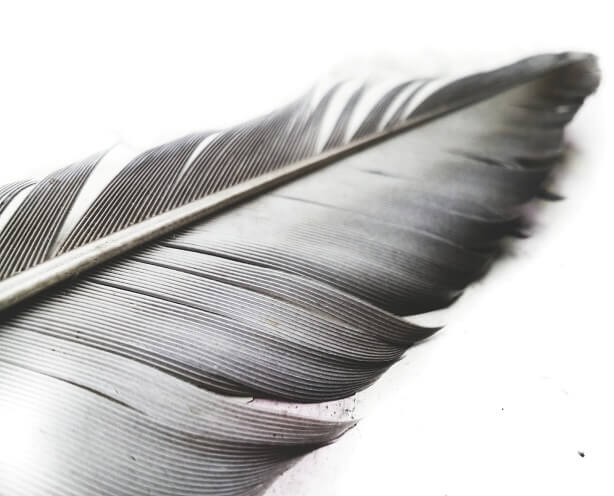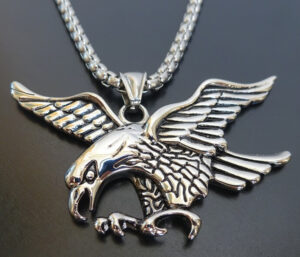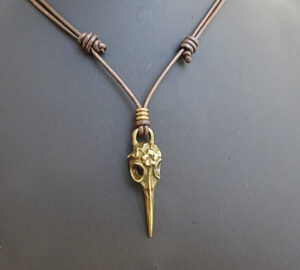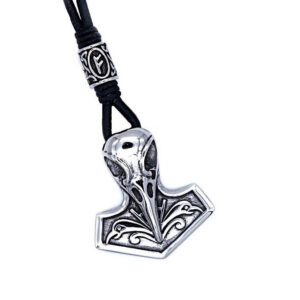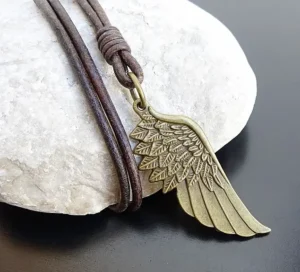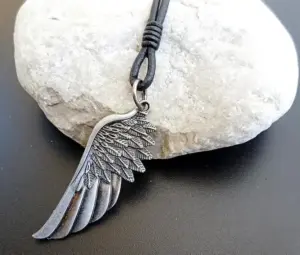The feather has been a potent symbol across various cultures and beliefs throughout human history. But what does the feather symbolize?
In this detailed blog post, we will delve into the fascinating world of feather symbolism, exploring its various meanings, significance in different traditions, and its connection to spiritual and emotional realms.
Join us as we uncover the mysteries of this seemingly simple, yet powerful symbol.
The Feather in Ancient Mythology and Religions
Egyptian Mythology
In Egyptian Mythology, the feather held a prominent position, symbolizing truth, balance, and order. Central to this symbolism was the Feather of Ma’at, which represented the goddess Ma’at herself. Ma’at was the goddess of truth, justice, and harmony, and she played a vital role in maintaining cosmic order and balance.

Feather of Ma’at
During the ancient Egyptian judgment process known as the Weighing of the Heart, the deceased’s heart was weighed against the Feather of Ma’at.
This ceremony took place in the Hall of Two Truths, overseen by the god Anubis, who was responsible for guiding souls into the afterlife. If the heart was lighter than the feather, it meant that the person had led a righteous and balanced life, and they would be granted passage to eternal paradise in the presence of Osiris, the god of the afterlife.
However, if the heart was heavier than the feather, it signified that the individual had committed sins and wrongdoings during their lifetime, leading to the heart’s consumption by Ammit, the devourer, and condemning the soul to a restless existence.
Feathers were also used by ancient Egyptians in various rituals and ceremonies. The ‘Opening of the Mouth’ ceremony, for instance, involved using a feather to symbolically restore breath and life to the deceased in preparation for their journey to the afterlife.
The feather, therefore, was a potent symbol of divine truth, balance, and the eternal journey of the soul in ancient Egyptian culture.
Native American Beliefs
In Native American beliefs, feathers hold deep spiritual and cultural significance, symbolizing a wide range of concepts, including strength, wisdom, honor, and connection to the divine. Among the various bird feathers valued in Native American traditions, eagle feathers are considered the most sacred.
The eagle, as a symbol of strength, courage, and spiritual connection, is believed to fly the highest and closest to the Creator, making its feathers particularly revered.
Eagle feathers are traditionally used in various ceremonies, rituals, and as elements of regalia. They may be incorporated into headdresses, clothing, or worn as adornments to represent status, honor, and achievements within the tribe. Gifting an eagle feather to someone is a high honor and signifies a deep respect for the recipient.
In addition to the eagle, feathers from other birds like the hawk, owl, or raven also carry significant meanings. Each bird is associated with specific attributes or qualities, such as wisdom, healing, or transformation.
Feathers are often used as tools in spiritual practices, like smudging, where they help to cleanse and purify energy by fanning the smoke from sacred herbs like sage or sweetgrass.
Moreover, Native American tribes have unique beliefs and practices concerning feathers. For instance, the Plains Indians would craft elaborate war bonnets adorned with feathers, which represented acts of bravery and were worn by warriors and tribal leaders.
The Pueblo tribes, on the other hand, would create prayer sticks adorned with feathers, symbolizing their prayers and intentions being carried by the wind to the spirits.
Celtic Traditions
In Celtic traditions, feathers also possess a rich symbolism, representing various spiritual, mystical, and natural elements. Birds played a significant role in Celtic mythology, often linked to deities, omens, and otherworldly realms. As a result, feathers from these birds held deep symbolic meanings.
One of the most revered birds in Celtic culture was the crane, symbolizing wisdom, knowledge, and longevity.
Feathers from the crane were believed to possess magical properties and were often used in rituals and ceremonies to invoke wisdom and protection.
Similarly, the raven, another prominent bird in Celtic lore, was associated with magic, transformation, and prophecy.
The raven’s feathers, considered to be powerful talismans, were thought to aid in accessing the otherworld, enhancing intuition, and providing guidance during difficult times.
The swan, another important bird in Celtic mythology, symbolized love, grace, and beauty. Its feathers were believed to bring inspiration and artistic creativity, often associated with poets and bards. Swans were also linked to the Tuatha Dé Danann, a group of god-like beings in Irish mythology, further emphasizing the feather’s connection to the divine and otherworldly realms.
In addition to specific birds, the Celts also believed in the concept of the “Feather of the Wind,” which represented the soul’s journey to the afterlife. The feather was seen as a symbol of transcendence, guiding the soul through the veil between the physical and spiritual realms.
Christianity
In Christianity, feathers have taken on various symbolic meanings, often associated with divine presence, protection, and spiritual communication.
One of the most prominent examples of feather symbolism in Christianity is the connection to angels, divine messengers who serve as intermediaries between Heaven and Earth.
Angels are often depicted with large, beautiful wings adorned with feathers, symbolizing their role as celestial beings capable of flight and transcending the physical realm.
The feather, in this context, represents divine guidance, protection, and comfort, as well as the belief that angels watch over and support believers during challenging times.
Some Christians also believe that finding a feather unexpectedly is a sign that angels are nearby or that they are sending a message of reassurance and love.
The Holy Spirit, another essential aspect of Christian faith, is also symbolically linked to feathers. In the Bible, the Holy Spirit is frequently described as descending upon individuals like a dove, a bird with gentle, soft feathers.
This imagery emphasizes the Holy Spirit’s role in providing spiritual guidance, inspiration, and comfort to believers. In this context, feathers may symbolize the presence of the Holy Spirit or the divine grace bestowed upon individuals to help them navigate their spiritual journey.
Feathers are also occasionally used in Christian art, literature, and hymns to represent themes like hope, faith, and spiritual ascension. For example, the famous 19th-century hymn “On Eagle’s Wings” draws upon the symbolism of eagle feathers to convey the idea of divine protection and support, illustrating the belief that God lifts and carries believers through life’s trials.
What Does the Feather Symbolize?
The Feather as a Symbol of Spiritual Connection
Feathers have long been seen as symbols of spiritual connection, embodying various aspects of the divine and serving as reminders of our inherent link to the spiritual world.
Angels and Guardian Spirits
As mentioned earlier, one of the most well-known connections between feathers and spirituality is their association with angels and guardian spirits.
Feathers, especially those resembling the soft, delicate plumes of a dove or the strong, powerful wings of an eagle, represent the presence of celestial beings watching over and guiding us.
Finding a feather can be seen as a sign that angels or guardian spirits are nearby, offering their support, protection, and encouragement as we navigate life’s challenges.
The Concept of Ascension
Feathers, given their role in enabling birds to take flight, also symbolize spiritual ascension or the process of rising to higher levels of consciousness and spiritual awareness.
The concept of ascension in various spiritual and religious traditions involves the belief that individuals can elevate their spiritual state, growing closer to the divine and transcending the limitations of the physical world.
Feathers serve as a potent symbol of this transformative journey, representing the freedom and lightness that comes with the expansion of consciousness and spiritual growth.
Spiritual Awakening and Messages from the Universe
Feathers are also believed to be messengers from the universe or the divine, serving as reminders of our spiritual nature and the importance of staying connected to our higher selves.
Many people view the discovery of a feather as a synchronicity or a sign that the universe is communicating with them, offering guidance, insight, or reassurance. Feathers can also symbolize spiritual awakening, the process of becoming more attuned to one’s spiritual essence and embracing a deeper sense of purpose and meaning in life.
The Feather as a Symbol of Freedom and Courage
The Feather’s Connection to Flight
Feathers, as essential components of birds’ wings, have an intrinsic connection to flight. In this context, they symbolize freedom, liberation, and the ability to rise above limitations and constraints.
The act of flight represents the release from earthly burdens and the ability to soar effortlessly through the sky, transcending physical and emotional barriers.
This symbolism resonates with the human spirit’s desire for autonomy, adventure, and the pursuit of dreams. As a result, feathers have become a powerful emblem of the freedom and boundlessness that individuals can achieve when they embrace their true potential and let go of self-imposed restrictions.
The Feather’s Role in Symbolizing Strength and Resilience
Feathers also represent strength and resilience, often linked to the courage and determination displayed by birds as they navigate long migrations or face various challenges in their natural environment.
Birds, despite their delicate appearance, are incredibly resilient creatures, capable of adapting to diverse habitats and weathering harsh conditions. In this sense, feathers symbolize not only the physical strength and endurance of birds but also the inner resilience and courage required to face adversity and overcome obstacles.
The eagle, for instance, is a powerful symbol of strength, courage, and spiritual connection in various cultures. Its feathers, which enable it to soar high above the earth, represent the ability to rise above challenges and view life from a broader perspective.
Similarly, other birds, such as hawks or falcons, embody the qualities of determination, focus, and fearlessness, with their feathers symbolizing the inner strength and courage needed to pursue one’s goals and dreams.
The feather serves as a potent symbol of freedom and courage, representing both the physical ability to take flight and the inner resilience and determination required to overcome life’s challenges.
Embracing the symbolism of the feather can inspire individuals to pursue their dreams, face adversity with courage, and embrace the limitless potential that lies within each of us.
The Feather as a Symbol of Wisdom and Knowledge
The Owl and the Feather
Feathers, particularly those of certain bird species, are often associated with wisdom and knowledge. The owl, for instance, is a universal symbol of wisdom, with its feathers representing the deep understanding and insight that come with intellectual pursuits.

Owls are nocturnal creatures, able to navigate the darkness with their keen senses, symbolizing the ability to see through the shadows of ignorance and uncover hidden truths.
The owl’s feathers, with their unique structure that allows for silent flight, further emphasize the idea of quiet contemplation and introspection that is often associated with wisdom and learning.
In many cultures, the owl is considered a wise and knowledgeable guide, with its feathers used as talismans to invoke wisdom, enhance intuition, and aid in spiritual development.
The owl’s connection to the moon and its cycles also highlights the link between wisdom and the natural world, as well as the ebb and flow of knowledge and understanding throughout one’s life.
The Feather as a Symbol of Communication and Expression
Feathers have also been associated with communication and expression, both in the realm of human interactions and in the context of divine messages. In ancient civilizations, quill pens made from feathers were the primary tools for writing and recording information, serving as essential instruments of knowledge transfer, learning, and creative expression.
As a symbol of communication, feathers can represent the power of language, both spoken and written, to convey ideas, emotions, and experiences. They also symbolize the importance of listening and being open to the messages from the universe or the divine, as well as the wisdom that can be gained through meaningful connections with others.
Furthermore, feathers can symbolize the process of self-expression and personal growth that comes with embracing one’s unique voice and perspective. They can inspire individuals to share their wisdom, insights, and experiences, as well as to seek out knowledge and understanding from others.
In conclusion, the feather is a powerful symbol of wisdom and knowledge, embodying the qualities of revered bird species like the owl and representing the essential aspects of communication and expression.
Embracing the symbolism of the feather can encourage individuals to pursue intellectual growth, share their insights, and remain open to the wisdom that life has to offer.
Grey Feather Meaning
The grey feather, in spiritual and symbolic contexts, is a powerful sign often associated with peace, neutrality, and balance. As a color, grey is neutral – not purely black nor purely white, symbolizing the blending of both.
Consequently, encountering a grey feather might signal a transitional phase in life, indicating a moment of change that requires adaptability and flexibility.
Grey feathers are often associated with the spirit realm, suggesting the presence of a departed loved one or guardian angels signaling their presence and support. Additionally, grey feathers may also symbolize hope. Even though grey may sometimes be seen as a dull or cloudy color, it also represents the calm before the dawn, promising a brighter tomorrow.
Lastly, a grey feather in your path might be a prompt to attain balance in your life, a reminder to find the middle ground in dealing with situations and to practice impartiality and compromise. Thus, the grey feather carries profound meaning and guidance, varying depending on the receiver’s unique life situation.
The Feather in Art, Fashion, and Popular Culture
Tattoos and Personal Adornment
Feathers have long been used as symbols in tattoos and personal adornment, often reflecting the wearer’s beliefs, values, or aspirations. Feather tattoos can represent various concepts, such as freedom, courage, spirituality, and wisdom, depending on the specific bird species, design elements, and cultural associations.

People may choose to get a feather tattoo as a tribute to their heritage, a reminder of personal growth or transformation, or as an expression of their connection to nature and the spiritual world. In addition to tattoos, feathers are also used in jewelry, hair accessories, and other forms of personal adornment, often symbolizing similar themes.
Feather-based Fashion Trends
Throughout history, feathers have been a popular element in fashion, adding a touch of elegance, glamour, and sophistication to clothing and accessories.
In various eras, feathers have been used to create extravagant hats, collars, and capes, as well as to embellish gowns, shoes, and handbags. Feathers have also been used in theatrical costumes, traditional ceremonial attire, and avant-garde fashion designs, often reflecting the cultural and symbolic meanings associated with specific bird species.
In recent years, feather-based fashion trends have included statement earrings, bohemian-inspired accessories, and ethically sourced or synthetic feathers as alternatives to traditional materials. These trends often draw upon the symbolism of feathers, expressing themes of freedom, self-expression, and connection to the natural world.
Feather Symbolism in Literature and Film
Feathers have played a significant role in literature and film, often used as symbols or motifs to convey deeper meanings or explore central themes. In literature, feathers may appear as metaphors for freedom, spirituality, or personal transformation, serving as vehicles for exploring characters’ inner lives and emotional journeys.
What does the feather symbolize in Forrest Gump?
In the film “Forrest Gump,” the feather symbolizes several themes, including destiny, chance, and the unpredictability of life. The feather floats through the air, carried by the wind, seemingly without any control over its path. This mirrors the journey of Forrest Gump’s life, as he experiences various events and circumstances that seem to be influenced by forces beyond his control. The feather also represents a sense of hope and the idea that, despite the uncertainties and challenges life presents, everything will work out in the end.

In film, feathers have been used as powerful visual symbols, representing various concepts depending on the context and narrative.
For instance, the feathered wings of angels in movies like “It’s a Wonderful Life” and “City of Angels” symbolize divine intervention, hope, and spiritual connection. In “Black Swan,” the protagonist’s feathered costume reflects her psychological transformation and descent into obsession and madness.
What Does the Feather Symbolize – Frequently Asked Questions
Can feathers have healing properties in alternative medicine practices?
Yes, feathers are sometimes used in alternative medicine practices, such as energy healing or smudging. Smudging involves burning sacred herbs, like sage or sweetgrass, and using a feather to fan the smoke over a person or space to cleanse negative energy and promote healing. Feathers from specific bird species may also be used in energy healing to channel the unique qualities and attributes associated with that bird, such as strength, wisdom, or spiritual connection.
How are feathers used in dream catchers, and what do they symbolize?
In traditional Native American dream catchers, feathers are attached to the woven web to symbolize air or the breath of life. As the dream catcher filters out negative thoughts and nightmares, the feathers allow positive dreams to gently float down to the sleeper below. Different types of feathers might also carry additional meanings, depending on the specific bird species and cultural beliefs.
What role do feathers play in some modern spiritual practices, such as oracle cards or divination?
Feathers are often incorporated into oracle cards or other divination tools as symbols of spiritual guidance, communication, and insight. Feather-themed oracle decks may feature various bird species and their associated meanings, providing users with a way to access messages from their higher selves, spirit guides, or the universe. Additionally, some practitioners may use feathers in their divination rituals, such as casting lots or meditating on the feather’s symbolism to gain insight and clarity.
How can I incorporate the symbolism of feathers into my meditation or mindfulness practice?
You can integrate the symbolism of feathers into your meditation or mindfulness practice by focusing on the specific qualities or attributes you’d like to cultivate. For instance, you might visualize a feather during your meditation, contemplating the ideas of freedom, courage, or spiritual connection. Alternatively, you can create a small altar or sacred space featuring feathers that hold special meaning to you, using them as a visual reminder of your intentions and aspirations during your practice.
Are there any superstitions or beliefs surrounding finding a feather of a specific color or type?
Some people believe that finding a feather of a particular color or type can carry specific meanings or messages from the universe or their guardian angels. For example, a white feather might symbolize purity, protection, or the presence of a loved one who has passed away, while a black feather could represent a warning or the need for personal transformation. However, these interpretations can vary greatly depending on cultural beliefs, personal associations, and the specific circumstances surrounding the discovery of the feather.

